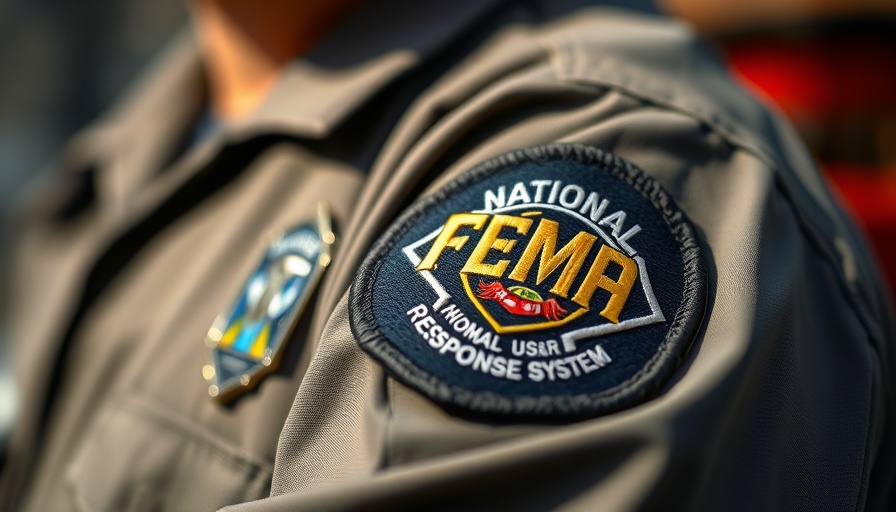
The Shifting Landscape of Disaster Recovery
As communities face an increasing number of natural disasters, the role of federal agencies like FEMA plays a pivotal part in ensuring that aid reaches those in need. Recently, FEMA announced a policy change that will end door-to-door canvassing, a move that has sparked controversy among disaster recovery advocates. This shift emphasizes the agency’s transition toward utilizing fixed facilities for assistance registration over direct outreach.
The Implications of Ending Door-to-Door Canvassing
Historically, FEMA's door-to-door canvassing has been instrumental in connecting with vulnerable populations, including the elderly and individuals with disabilities who may not have the mobility or resources to seek out help. Recent reports indicate that removing this direct line of communication may leave many without essential support just when they need it most. Cameron Hamilton, acting administrator, argues this change will streamline operations, allowing FEMA to concentrate resources at designated locations, but critics disagree.
Understanding the Rationale Behind the Reform
One reason cited for this reform is to enhance collaboration with local and tribal agencies and non-profit organizations. By moving away from unaccompanied federal canvassing, FEMA hopes to create a more sustainable recovery model where community partners are front and center. Geoff Harbaugh, FEMA’s associate administrator for the Office of External Affairs, believes this reorganization is long overdue, deeming the traditional approach as wasteful.
The Feedback Loop of Disaster Management
However, feedback from industry professionals, such as Todd DeVoe from Inglewood's emergency management division, underscores the counterarguments. DeVoe underscores that while fixed sites may enhance cooperation, they risk excluding those who are most affected by disasters due to a lack of information. Historical data supports this sentiment, indicating that direct interaction yields higher recipient engagement and comprehension of available resources.
Navigating the Future of Federal Disaster Response
As other federal agencies take note of FEMA's changes, they might reconsider their outreach strategies, too. The blend of technology and streamlined communication will be critical in shaping how leaders adapt to these emerging trends. With a greater emphasis on integrated disaster management practices that utilize technology alongside local knowledge, emergency managers could leverage analytics to assess community needs more effectively than before.
Actionable Insights for Industry Leaders
The evolving framework of FEMA's operations presents opportunities for executives across industries to reassess their approach to community engagement, especially in crisis scenarios. Fostering relationships with local entities not only aids in disaster recovery but also enhances corporate social responsibility. By respecting the nuances of local contexts and leveraging technology, businesses can cultivate more profound connections with their communities.
Concluding Thoughts
FEMA's decision to discontinue door-to-door canvassing reveals a critical turning point in disaster response strategy, potentially impacting countless lives during recovery efforts. Leaders are invited to consider how similar practices can support better communication channels in their sectors. Adopting a forward-thinking approach could make a significant difference in community outcomes during crisis moments.
 Add Row
Add Row  Add
Add 




Write A Comment